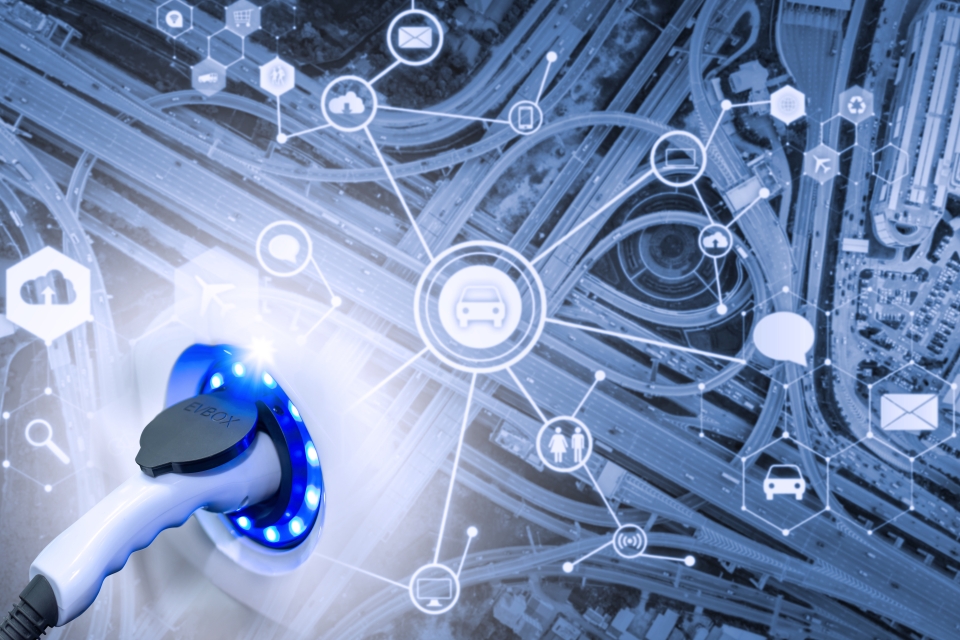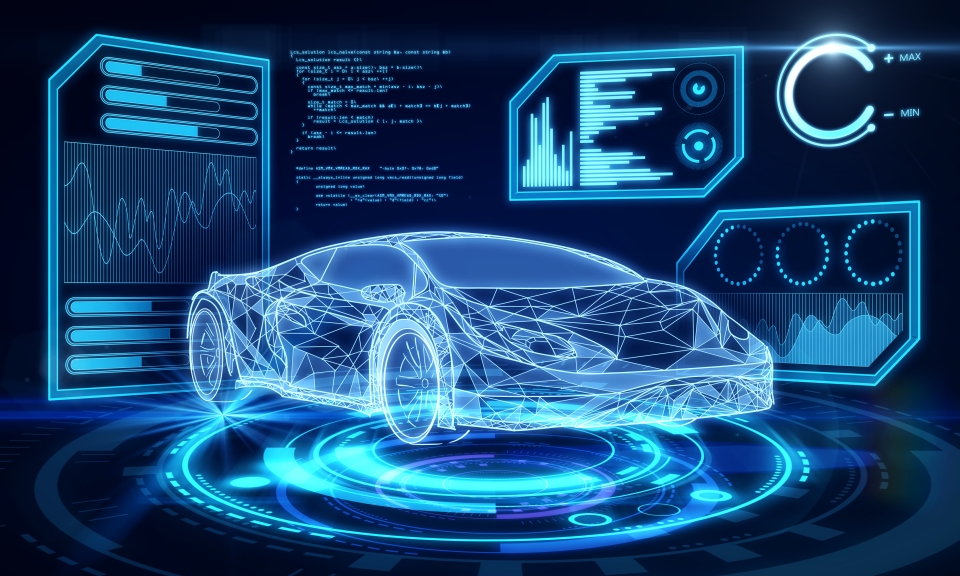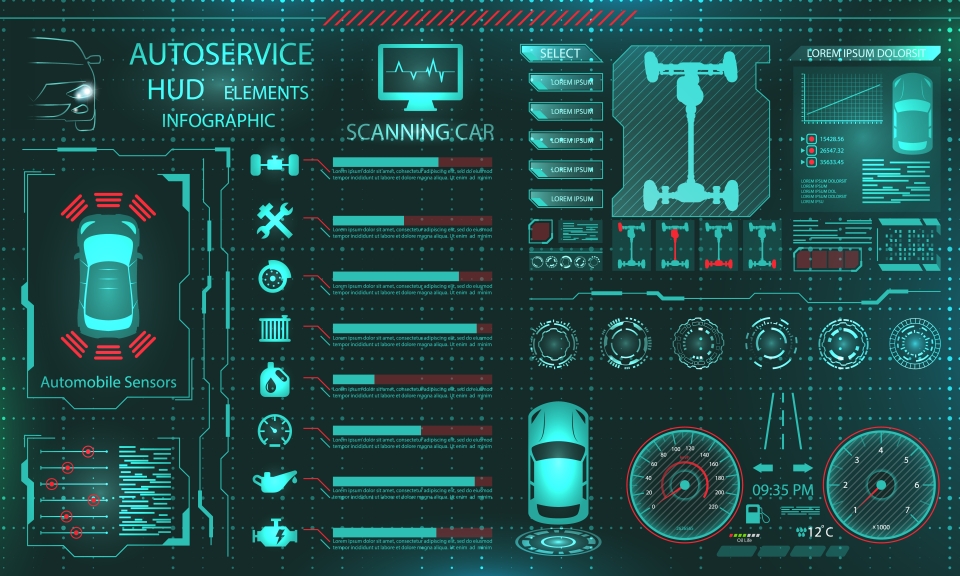Development of Global Automobile Industry Is Moving Towards Self-Driving Technology
2023/08/10 | By Andrew Hsu
The era of self-driving vehicles has arrived! In recent years, almost every major car manufacturer has been dedicated to R&D for such technology. With the aim to dominate the market, they are striving to develop complete and mature solutions as soon as possible.
As of now, Tesla has already built Level 2 driving automation features like "traffic-aware cruise control" and "autosteer" into their vehicles. Moreover, they offer a full self-driving (FSD) option, enabling automobiles to automatically decelerate or stop in response to traffic signals. Notably, Tesla's approach excludes the use of lidar or radar for detection. Instead, the company aims to replicate human-driven patterns by employing cameras as substitutes for human eyes, with artificial neural networks (ANN) serving as the equivalent of human brains. This strategy is being implemented in certain Tesla car models equipped with "Tesla Vision," which utilizes an eight-camera system and ANN to assist in judgment and achieve level-two driving automation.
Apart from Tesla, Waymo, the self-driving unit owned by Alphabet Inc., has also made significant strides in autonomous driving. Since launching its self-driving service for suburban areas in Phoenix, USA, in 2017, Waymo has steadily expanded its business scope. By 2022, Waymo had extended its driving automation service to cover downtown Phoenix, San Francisco, and Los Angeles, where heavy traffic flow, roads with strong backlighting, and narrow alleyways are challenging factors to service providers of this kind. Drawing on its accumulated experience from suburban and downtown operations, Waymo ventured into providing paid shuttle services at Phoenix airport, making it the first self-driving company to offer airport shuttle service.
Amidst the intense technology competition among numerous companies, Taiwan is firmly keeping pace. Thanks to subsidies from the Department of Industrial Technology and the Ministry of Economic Affairs (MOEA), the Industrial Technology Research Institute (ITRI), and Taoyuan International Airport Corporation have jointly unveiled their achievements in a self-driving test at Terminal 1 and 2 in Taoyuan International Airport, along with the surrounding key locations. Notably, this test marks the first high-speed self-driving trial in an open area and stands as Taiwan's fastest self-driving test case to date.
Covering a 4.2-kilometer stretch, the test incorporates 5G smart intersection technology and underlines Taiwan's prowess in innovative self-driving technology and the seamless integration of 5G advancements into intelligent airports. This milestone is not only a testament to Taiwan's accomplishments but also marks the beginning of further verification tests on open roads in the future, including highways and expressways, as well as overall road safety enhancement.
Chih-Kung Lee, Chairman of ITRI, highlights that ITRI's self-driving system has achieved remarkable results since obtaining Taiwan's first license plate in 2019, granting them the ability to conduct tests in different areas. Notably, they successfully obtained verification on Austria's highway and attained high standards at Taoyuan International Airport, as mentioned earlier.
To further enhance self-driving capabilities, ITRI is focusing on improving AI computational capability and expanding the sensing radius around the car. This effort is complemented by the integration of 5G low latency vehicle-to-everything technology and the incorporation of self-developed 5G smart intersection facilities. As a result, self-driving cars are expected to exhibit greater safety and precision, especially on roads with heavy traffic flow.
Looking ahead, ITRI has drafted a comprehensive 2030 technology blueprint aimed at introducing more cutting-edge technologies into everyday life. In the realm of self-driving technology, ITRI is committed to collaborating with system integrators to develop self-driving buses, bolster the development of a comprehensive self-driving ecosystem, and turn Taiwan into a global leader in self-driving car technology.
According to a report from MOEA, the global market size of self-driving services (including Mobility as a Service) is projected to be near US$11.3 billion this year and then exceed US$130 billion by 2025, which represents an over tenfold increase. In response to this promising market outlook, countries worldwide are working on self-driving-related legislation to address the growing demand.

Worth mentioning is that Mercedes-Benz's announcement to release Level 3 driving automation systems for Germany's S-Class and EQS buyers has spurred nations to refine local rules and regulations of law to accommodate this technology. The mainstream regulation for Level 3 driving automation is the law-regulated Automated Lane Keeping Systems (ALKS) legislated by the United Nations Economic Commission for Europe (UNECE). The law applies to nations such as some contracting states, including the EU and Japan.
In June 2022, UNECE made adjustments to the regulation, enhancing the maximum speed of the automated driving system to 60 to 130 km/h and permitting automatic lane changing. These changes mean that Level 3 driving automation systems won't be confined solely to traffic congestion situations and are set to come into effect in 2023. The rapid developments in legislation are geared toward exploring the market potential of self-driving technology while ensuring safety and efficiency on the roads.
Among the progressive development of regulations for Level 3 driving automation, countries like Germany are actively moving towards establishing Level 4 regulations. In 2022, Germany authorized the operation of Level 4 systems in specified designated areas. To further ensure safety, self-driving companies are mandated to provide stringent liability insurance, and the vehicles must be equipped with remote control.
Coincidentally, Japan has embraced Level 4 automation by allowing cars equipped with such systems to provide self-drive shuttle services in sparsely populated areas. These vehicles are required to have in-vehicle or remotely monitored supervisors to ensure safe operation.
In the United States, the central government provides main principles and directions, allowing state governments to create their own regulations for self-driving car testing or commercial deployment. Meanwhile, mainland China has set ambitious targets for self-driving technology. By 2025, self-driving passenger cars, trucks, and passenger vehicles are expected to operate on designated roads. Moreover, Level 4 automation is anticipated to be deployed on urban roads by 2030.
These ongoing efforts in various countries reflect a global trend for self-driving technology while maintaining a focus on safety and regulatory compliance.





